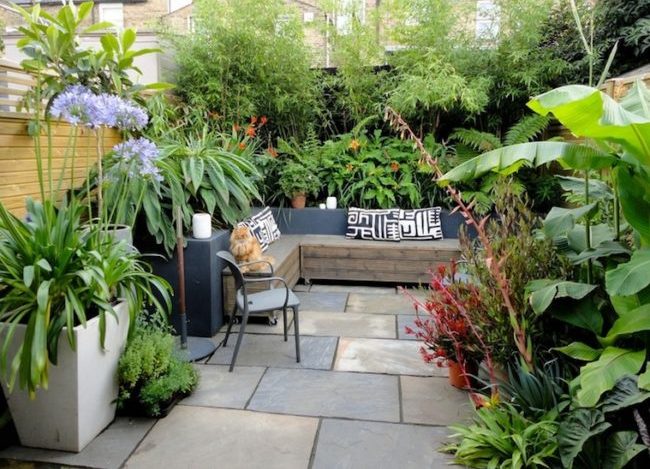How to organize landscape design in a small space?
Do you have a small outbuilding? This does not mean that you should limit yourself in the level of improvement of your yard. Many homeowners today, when buying or building their home, make a choice towards a larger area directly in the residential building, with a small plot of land in the backyard.

Frustrated by the lack of space, some homeowners simply stop thinking that they can turn their yard into something comfortable and functional. Others, faced with a compact space, agree to simple solutions, because they mistakenly believe that only significant financial investments will allow turning a limited space into something beautiful and usable. We can say with confidence that both of them are wrong. Today, there are many different ideas for landscape projects on relatively small plots of land.
A tiny garden can be functional, comfortable and beautiful.

Here are some tips for landscaping small outbuildings.
1. Analyze the space you have – the walls of the house, the perimeter fence, the composition of the soil and existing trees.
So how do you integrate form and function to achieve a beautiful yet useful landscape? Think first, what is the basis of the structure and contour of the space – plane or bumpy? Is the soil fertile or rocky? Is the plot symmetrical or asymmetrical? How can you use this space effectively?
People often make the mistake of thinking about plants first. Yes, green spaces are important, of course, but many homeowners and even professional gardeners start at the wrong stage of landscaping, thinking about where they can place plants without first considering the structure of that space. It is more important to think about the functionality of the space and its “possibilities”, especially in small areas where there is no room for mistakes. Large plots can forgive many more mistakes in landscape design, because there are many opportunities for “experiments”. Keep in mind that consideration of landscape form and function precedes the planning of planting green spaces, which does not reduce the value of plants, but simply puts them in the right sequence.

2. Determine the functional zones of your plot – how do you enter, exit and pass through your yard?
When you have determined the features and properties of the topography of your area, you will be able to understand how they will determine the landscape design. But first, you need to know how your house interacts with the grounds, and how every corner of the land connects to the boundary of your lot. Where do big trees grow? Are there rocks and water sources to consider? Where are the paths, driveway, patio or gazebo located? How are the windows located in your home? All professional landscape projects are based on one key aspect: movement. This movement is broken down into three elements: access, exit and interaction – how you enter, move in and out of a space.

3. Plan places to rest.
The reason this is so important is that every square meter is crucial in a small space. If you have a small lot and want to make sure you plan the seating area in the right place so you don’t feel restricted when you drive through it, first determine your traffic routes through the lot, then think about where you want to sit and chat. Once you determine this, you can adjust the recreation area taking into account the position of the sun, shade and season – how will it be there in spring or autumn? Will I go there in winter? Think about how you can use your yard from season to season.

4. Choose appropriate materials – do not skimp on good quality.
Now that you have carefully studied the topography, site features, movement and recreation areas, you can start thinking about materials, starting with small architectural forms such as patios and gazebos, and ending with garden furniture. One of the many advantages of a small space is that it allows you to use more expensive materials in smaller quantities.

5. Choose plants – give priority to vertically oriented plants with ease of pruning.
And finally we get to the plants. Plants are what bring life to the space and please not only our eyes, but also the heart. In small spaces, you are limited horizontally, so you think vertically, considering the plants located near the fence. Since your landscape will grow vertically, consider incorporating vines on a trellis fence. Mastering the art of pruning is essential to keeping your yard tidy and comfortable, so take the time to learn how to do it right and well, or hire a professional gardener.

